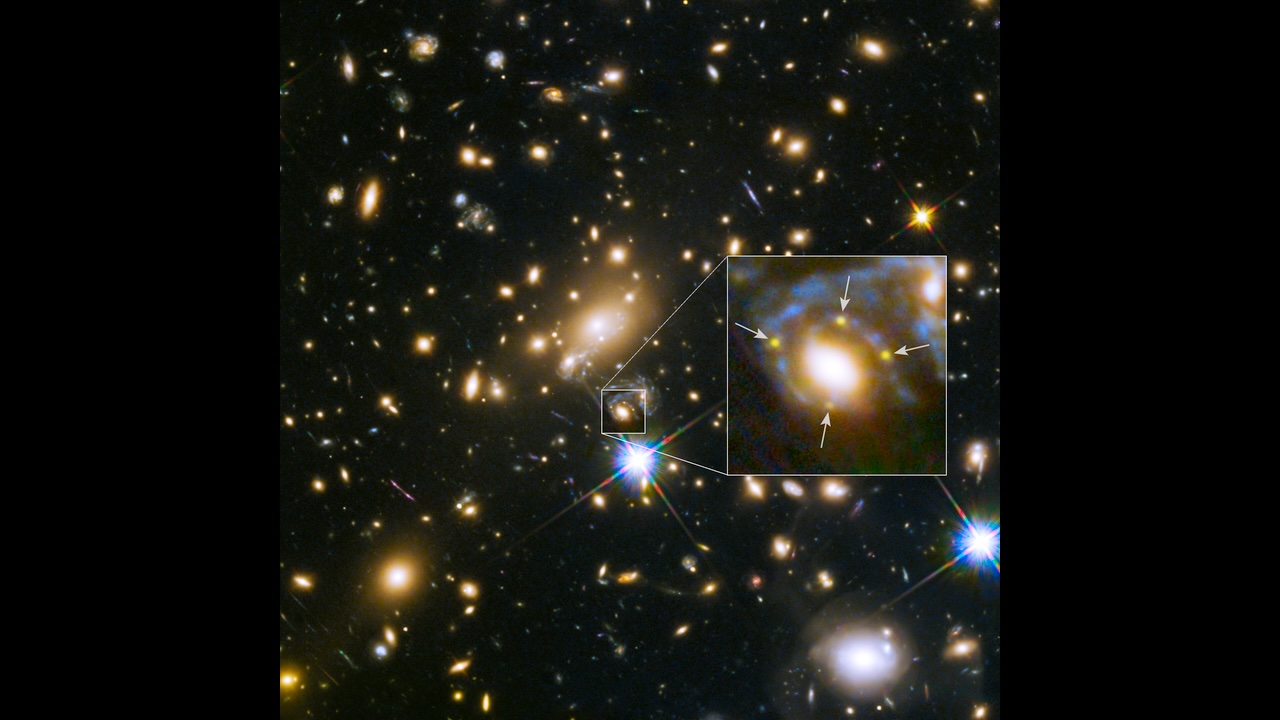Supernova are a fascinating phenomenon and have taught us much about the evolution of stars. The upcoming Nancy Grace Roman telescope will be hunting the elusive combination of supernovae in a gravitational lens system. With its observing field 200 times that of Hubble it stands a much greater chance of success. If sufficient lensed supernovae are found then they could be used to determine the expansion rate of the Universe.
Supernova are stellar corpses, the remains of supermassive stars that have reached the end of their lives. The events mark one of the most energetic processes whose light can be seen across the cosmos. Astronomers have studied their light output for decades to identify which type of supernova they are so that they can calculate the distance to their host galaxy and even the expansion rate of the Universe. This approach however, relies upon measuring brightness.
Another equally fascinating phenomenon are gravitational lenses. In these chance alignments of galaxies, the gravitational force of the intervening objects bends the light from the more distant, magnifying it and providing a new window on more distant regions of space.
Gravitational lenses are chance alignments and reasonably rare but the liklihood of a supernova occurring in a gravitational lensed galaxy is even rarer. Enter NASA’s Nancy Grace Roman Space Telescope due for launch in 2027. Its impressive wide field will allow astronomers to explore great swathes of sky at once, souring the Universe for gravitationally lensed supernovae. Not only will it be able to capture a greater region of the sky but using the High Latitude Time Domain Survey will observe the same region of sky over and over again over a period of two years to identify any changes over time.

The team is led by Lou Strolger from the Space Telescope Science Institute is already working on techniques to find the rare events through a project funded by NASA’s Research Opportunities in Space and Earth Sciences. They will use simulated images of gravitational lenses to help them prepare. Given the launch of the 2.4m wide field telescope is still three years away the team has time to develop the techniques and processes so they can hit the ground running once the telescope is available.
Already there have been eight likely gravitationally lensed supernovae discoveries that are being analysed and that’s using the Hubble Space Telescope and the James Webb Space Telescope. The Nancy Grace telescope is a game changer and, given enough time can take us a step closer to understanding the expansion rate of the Universe and give us more of an insight into the nature of dark matter and dark energy too. Exciting times.
Source : NASA’s Roman to Use Rare Events to Calculate Expansion Rate of Universe


First such measurement using a lensed supernova was published 2023 [“Constraints on the Hubble constant from supernova Refsdal’s reappearance”, Science].
Not quite the common supernova “distance ladder” result: “We infer a value of H_0 of 64.8 +4.4/-4.3 km*s^1*Mpc^-1 using the full set of eight pre-reappearance models and of 66.6 +4.1/-3.3 km*s^1*Mpc^-1 from the two preferred models.”